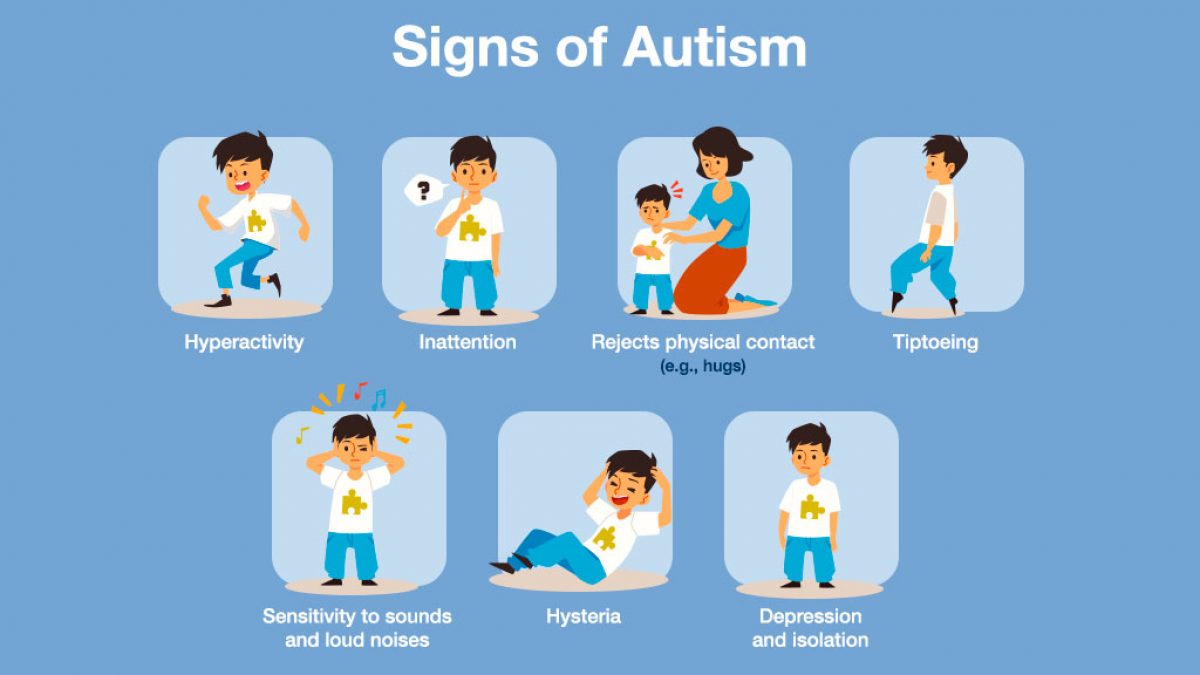Neurodevelopmental disorders is a group of conditions, where the normal development of human brain is disrupted and it’s leading difficulties in areas like learning, communication, social interaction, and motor skills in children.
Key categories of neurodevelopmental disorders in DSM-5 include:
- Autism Spectrum Disorder (ASD):
In Autism Spectrum Disorder (ASD), group of conditions characterized by difficulties in social communication and interaction, and repetitive or restricted behaviors and also sensory deficits. Children with ASD also have poor eye contact and attention.
In Bangladesh, the prevalence of Autism Spectrum Disorder (ASD) varies across studies, with estimates ranging from 1.5 to 17 per 10,000 children. The Ministry of Social Welfare reported autism as 19% of total neurological disabilities recorded.
 These number of children having ASD is increasing day by day.
These number of children having ASD is increasing day by day.
According to CDC GOVT, Management or treatment of children with Autism is really very difficult and differ from child to child as they are very unique representation of problems.
These available treatment approaches are:
- Medical: There is very limited medical treatment for children having Autism but it is also needed to manage hyper-activeness, to control self or injurious behavior.
- Therapy based: Occupational Therapy (OT) treatment are very commonly used to provide sensory therapy, task based approach, Functional Activities of daily living skills training. Moreover, Speech and Language Therapist (SLT) works to develop speech and communication skills.
- Behavioral approaches
Behavioral approaches mainly focus on changing behaviors by understanding what happens before and after the behavior. Behavioral approaches have the most evidence for treating symptoms of ASD. They have become widely accepted among educators and healthcare professionals and are used in many schools and treatment clinics. A notable behavioral treatment for people with ASD is called applied behavior analysis (ABA). ABA encourages desired behaviors and discourages undesired behaviors to improve a variety of skills. Progress is tracked and measured.
Educational approaches
Educational treatments are given in a classroom setting. Along side OT, SLT, ABA, Special Educator also works great to not only educate the child but also to help the child to learn and practice their daily activities such as feeding, dressing, grooming ect at school setting.

Attention-Deficit/Hyperactivity Disorder (ADHD):
ADHD is a Neuro-developmental disorder characterized by an ongoing pattern of one or more of the following types of symptoms:
- Inattention, such as having difficulty paying attention, keeping on task, or staying organized
- Hyperactivity, such as often moving around (including during inappropriate times), feeling restless, or talking excessively
- Impulsivity, such as interrupting, intruding on others, or having trouble waiting one’s turn.
Some of the signs may be noticable at an early age, while others may only become obvious as a child becomes older and they become more independently responsible for skills of every day living. Dyspraxia can affect a childs gross motor skills such as riding a bicycle and playing sports, and can also affect fine motor skills such as writing, and tying shoelaces.
Dyspraxia is a lifelong condition that can present in different ways in adulthood. Learning to drive a car, shaving, applying makeup, social skills and employment options may all be impacted upon for young adults.

Dyspraxia or Developmental Co-ordination disorder is more common than you would think with research showing that “The prevalence of dyspraxia in school-age populations is about 6% (or 1 in 20 people) and 10% of the overall population” (Farmer et al 2017).
